Taking a vacation is one of the highlights of the year for a family. Some families only have enough money for small trips, while others can travel to the other side of the globe. But the Hicks family could visit a paradise not too far away from home.
When they went to the idyllic island of Bali, this family would have an unforgettable vacation. After a surprising incident at the famous Ubud Monkey Forest, they would also become the focus of international news. Let's explore why Bali is such a popular destination and find out what happened to the Hickses.
An Australian Family's Memorable Bali Vacation

Mom Judy, dad Simon, and their three children compose the Hicks family. They have two boys, Elijah and Jimmy, as well as one girl, Kayleigh. The family wanted to go somewhere exotic, so they decided to go to Bali in Indonesia for an unforgettable experience.
The Hickses couldn’t have imagined just how special and iconic their experience would be. Something they were particularly looking forward to was their visit to the Ubud Monkey Forest. It was the actions of one of the native animals there that would make them famous.
A Unique Reserve Home To Hundreds Of Monkeys
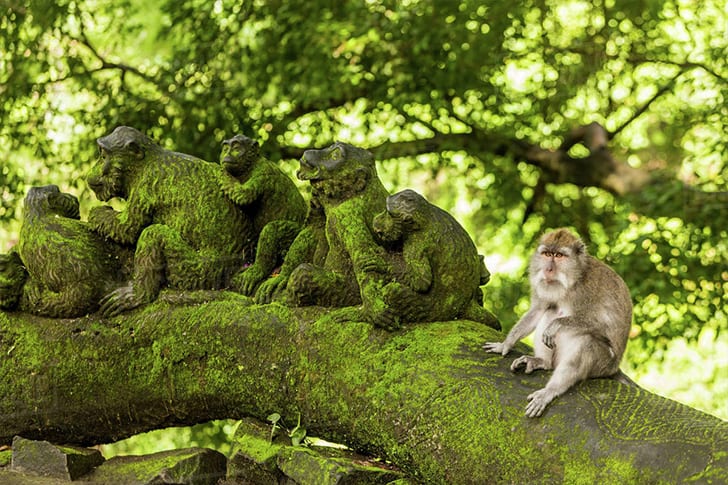
The Ubud Monkey Forest is a well-organized reserve and the natural habitat of a species known as the Balinese long-tailed monkey. There are hundreds of these monkeys in the forest, placed in different regions according to their ages, that tourists get to see up close.
Residents of the area consider the forest to be a sacred place, so there are three temples in the forest as well. Most of the villagers' earnings come from visitors to the forest, which might be why the Hicks family's incident there got so much attention.
A Mom of Three's Dream Vacation

Judy and Simon's three children are very close in age, and the parents are no less energetic than the children. Hence, Judy decided to ensure the family would get the most out of their Bali vacation by making an ambitious plan to tour the entire island.
It must have been relaxing to take a whole week off from work just to spend some quality time with family, and Bali is one of the most visited places in the world for good reason. Its beautiful scenery and numerous amenities provided lots of family fun for the Hickses.
Making Plans For An Exciting Trip
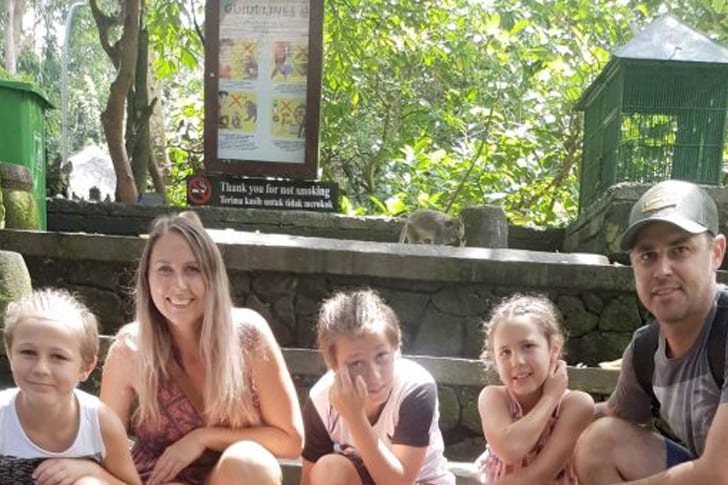
The Hickses are from Queensland, Australia, so their trip to Bali was about three hours long. Since all five of them were going, it was important for the family to stay on a budget. Fortunately, there were plenty of cheap flights available to help minimize costs.
One of the nice things about Bali is that the wonders of nature are everywhere, allowing people to enjoy themselves simply by admiring their surroundings. Thus, the Hickses were certain as they got ready for their weeklong vacation that they were going to have a great time.
Bali: One Of The Most Spectacular Islands In Indonesia

Although Bali is just one of many islands in Indonesia, it’s among the best known by far. The island holds many attractions for tourists from all over the world not only because of its natural beauty but also because of the renowned hospitality of its inhabitants.
The island's attractions include gorgeous beaches for some fun in the sun, hills for hiking, as well as sacred sites for people to get in touch with their spiritual side. With so many activities to choose from, booking a trip to Bali is a sound investment.
For All Ages, Bali Has Something To Offer

Bali offers a wide variety of options to suit the tastes of any traveler. There we can find everything from 5-star hotels for those seeking a luxurious getaway to comfortable hostels for people such as backpackers looking for the best value on a low budget.
Furthermore, Bali offers many different types of vacation packages. The island may be only about 2,000 square miles, but it has plenty of room for activities such as bicycling, diving, and rafting. People can also hike on an extinct volcano or explore the jungle.
Bali Has One Of The Most Spiritual Cultures

Bali is divided into various tourist hubs all over the island. One of these is Seminyak in the south. Sanur, located on the east coast, has a serene atmosphere perfect for visitors looking to find some inner peace, leaving behind all the anxiety of city life.
Right in the middle of Bali is Ubud. This area is the cultural center of the island, where visitors can most authentically experience the natives' lifestyle and traditional customs or learn more about the island's ancient history by visiting the temples found throughout the region.
Bali's Cultural Heritage Is Among The Most Ancient

The first settlers to make their homes in Bali came from other areas in Asia, mainly by crossing the South China Sea. They developed a unique irrigation system very early on. Many artists began moving to Bali around 1300, introducing Indian influences on the culture.
Thanks to the diversity of its settlers, Bali has a rich cultural heritage that dates back to over a millennium ago. Colonization later threatened to destroy Bali’s past, but its people managed to preserve their traditions and way of life. This is part of what makes the island so exceptional.
The Surprisingly Violent Past Of One Of The Most Peaceful Asian Islands
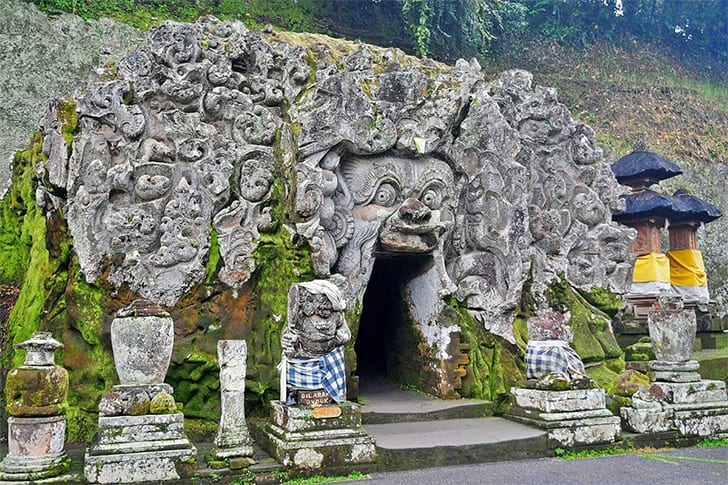
Although Bali is now thought of as a perfect place to get away from it all, the island wasn't always peaceful. During the period in which the Dutch attempted to colonize the island, there were numerous wars, some of which were between groups of natives.
Eventually, however, the Royal Balinese armies united against the Dutch. The natives fought without any concern for their own health, considering it better to die by the sword than live with the humiliation of defeat. Although the Dutch retained control, they never completely conquered the island.
Balinese Culture Is Among The Most Tolerant
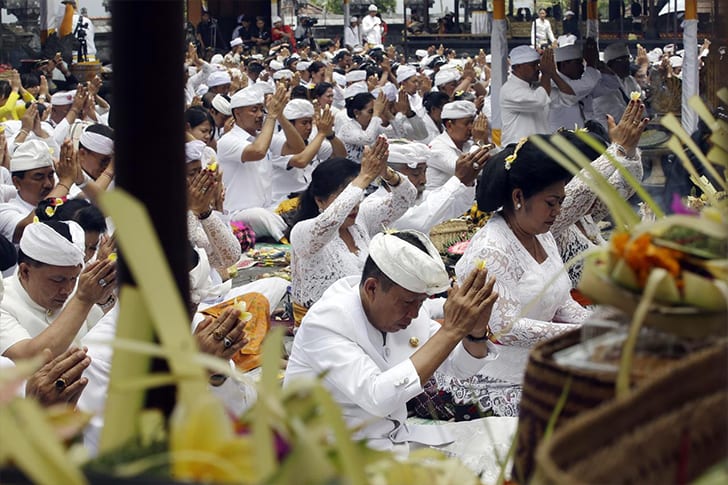
Another thing that stands out about Bali is its policy of religious toleration. Although the vast majority of the population adhere to Balinese Hinduism, a unique blend of native traditions and influences from other Asian countries, they don’t try to control or eradicate other religions.
Islam is the second most prevalent religion, while Christianity and Buddhism are also present on the island. In addition to Acintya, the Supreme God, Balinese Hindus worship other deities mostly related to agriculture. These mixed beliefs further enrich the culture, so that Bali has become known as the Island of a Thousand Temples.
The Island Is So Touristic Many People Speak English
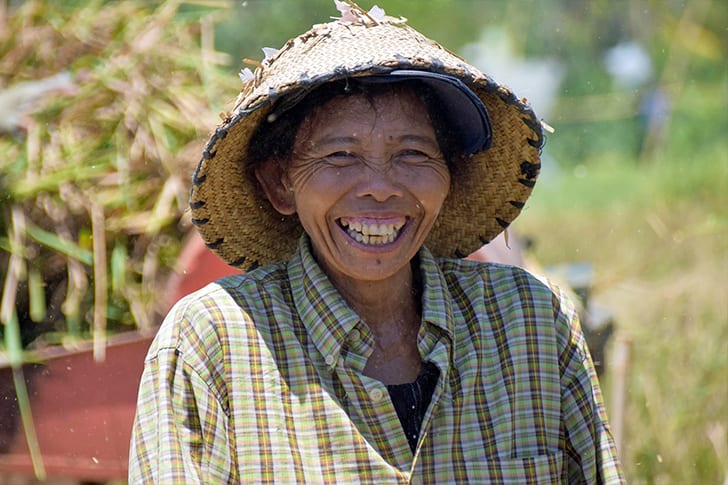
The predominant languages spoken in Bali are Indonesian and the common Balinese tongue with indigenous dialects mixed in as well. Don't worry, though: visitors to the island who speak English, such as the Hickses, don't have as much trouble making themselves understood as we might think.
Due to the constant arrival of English-speaking tourists, many Balinese have learned English over the years, so that it has become the most commonly spoken foreign language. This is part of the world-famous Balinese hospitality that enables the tourism industry to thrive on the island.
Balinese Crafts And Designs Are Extremely Intricate
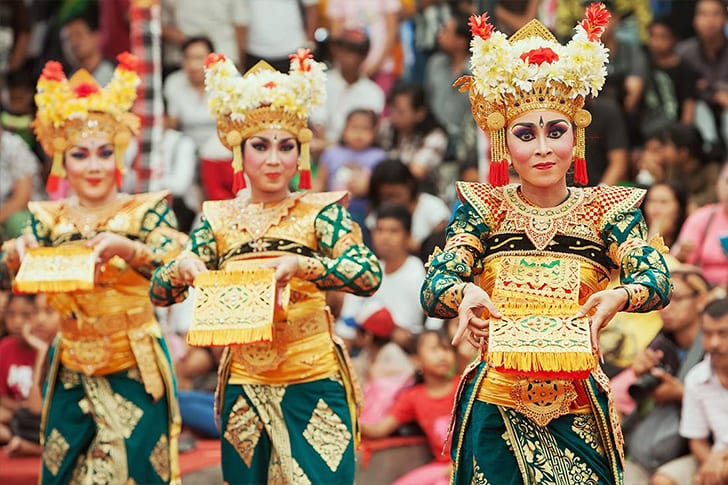
Bali is also famous for its arts and crafts. From woodcarvers to painters, Balinese artisans dedicate a lot of time to ensure they achieve a high level of detail. Even in traditional dances, this attention to detail is appreciated in both their movements and the clothes they wear.
As a result, many tourists buy the local handicrafts, and seeing a Balinese dance performance is a treat. Balinese performing arts often portray religious stories, so most of them are regarded as sacred. However, numerous paid performances have become available in response to popular demand.
One Of The Biggest Draws In Ubud
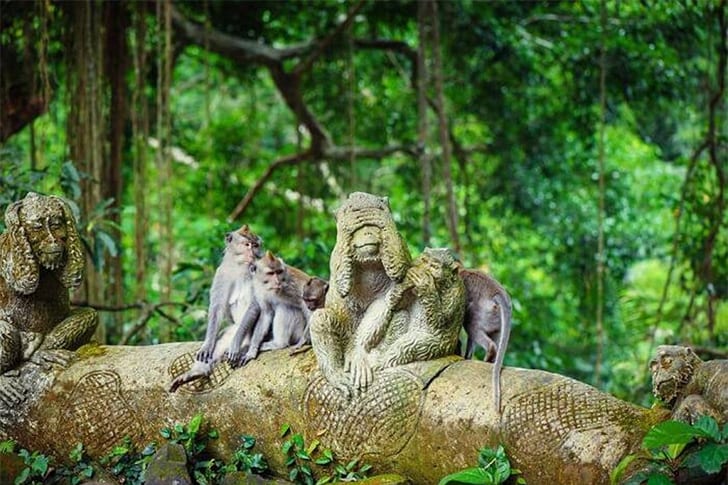
The Ubud Monkey Forest is probably the most frequently visited place in central Bali, drawing thousands of tourists every year. The forest may be an important source of revenue for the area, but it's about far more than cash to the locals, as we'll see.
The forest offers plenty of attractions to visitors. Its more than 150 plant species show the variety that exists in just one natural environment, and its three temples provide insight into the native culture and religion, but the main attraction is, of course, the monkeys.
The Greenest Of Forests With Much To See
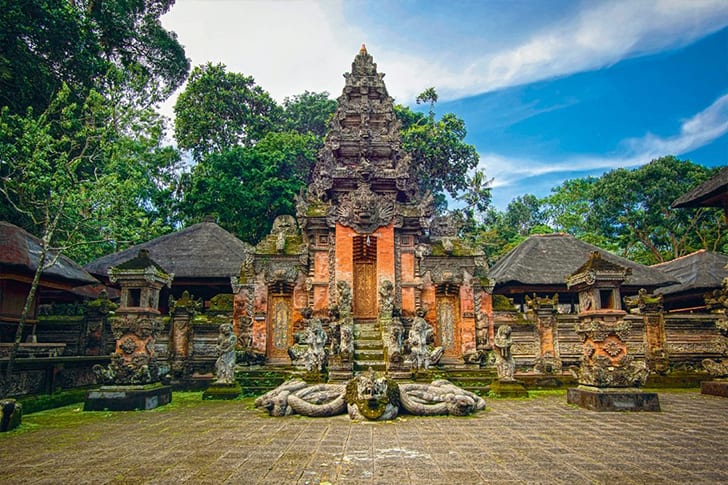
The density of trees in the Ubud Monkey Forest is certainly impressive. The whole forest extends to around 27 acres, featuring a wide variety of tree species. There are also hills people can climb for a good workout. A stream winding through the terrain adds to the beauty of the forest.
The villagers work hard to preserve the abundance of nature in the forest. For them, it's just as much about staying in tune with the natural world on a spiritual level as it is about keeping the area attractive to tourists. The three temples in the forest are a testament to this.
Sacred Trees Are Abundant In The Forest
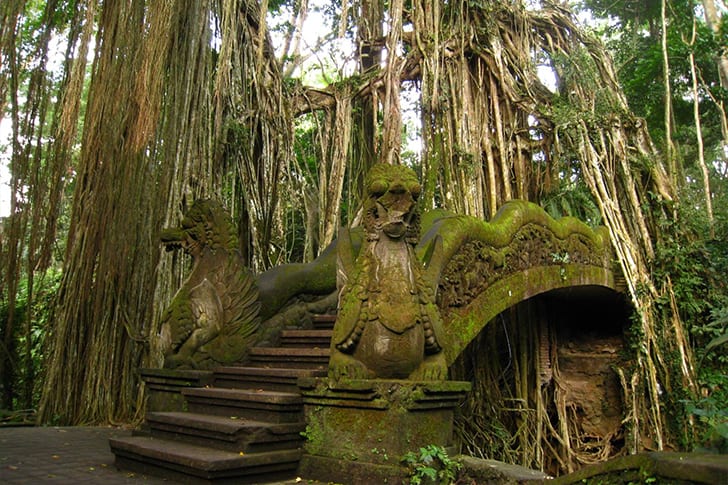
The Ubud Monkey Forest is also known as the Sacred Monkey Forest because among its more than a hundred tree species are some considered to be sacred by the natives. From ancient times, the Balinese have used these trees in certain religious rituals and customs.
For example, sacred trees are used in the construction of shrines or during the cremation of the deceased. Visitors thus experience traditional Balinese culture with every step they take in the forest, which was why the Hicks family wanted a guided tour of the place.
The Forest Also Provides Plenty Of Accommodations
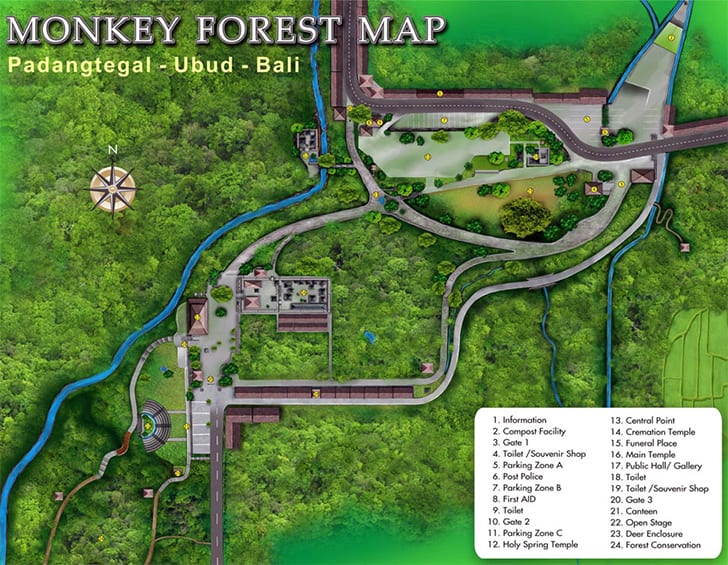
Although the Ubud Monkey Forest is dominated by its hills, trees, and monkeys, there are also certain amenities available in the area. The locals did their best to provide enough accommodations to support the influx of visitors without interfering too much with the natural environment.
For tourists' convenience, the forest has a canteen offering refreshments, as well as an open stage where performances can take place. A police post and a first-aid center ensure the safety of visitors. There’s even a composting facility to promote taking care of the environment.
The Forest Is Home To One Of The Largest Monkey Populations
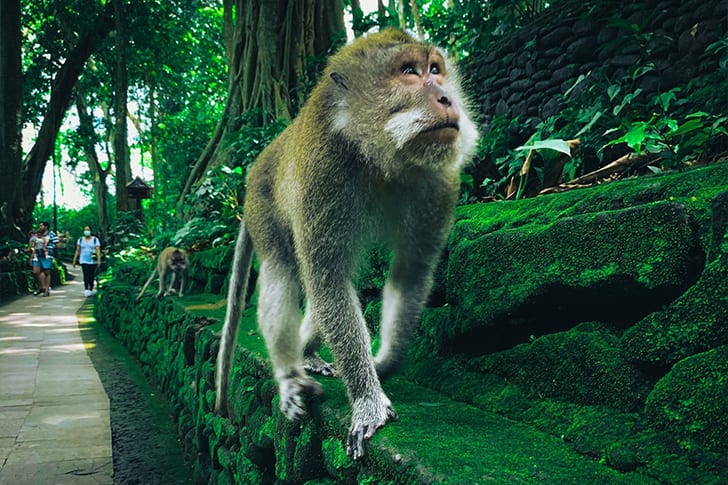
The species of monkey in the Ubud Monkey Forest is commonly referred to as the crab-eating macaque, though Macaca fascicularis is the scientific name found in textbooks. Despite living in separate areas, the hundreds of macaques often engage in territorial disputes over scarce resources during certain seasons.
These monkeys can be found in all of Southeast Asia, but the population in the Ubud Monkey Forest is one of the largest. In other areas, they’re often seen as an invasive species and a threat to the food supply of the local human community.
Crab-eating Macaques And Humans Have Very Similar Diets
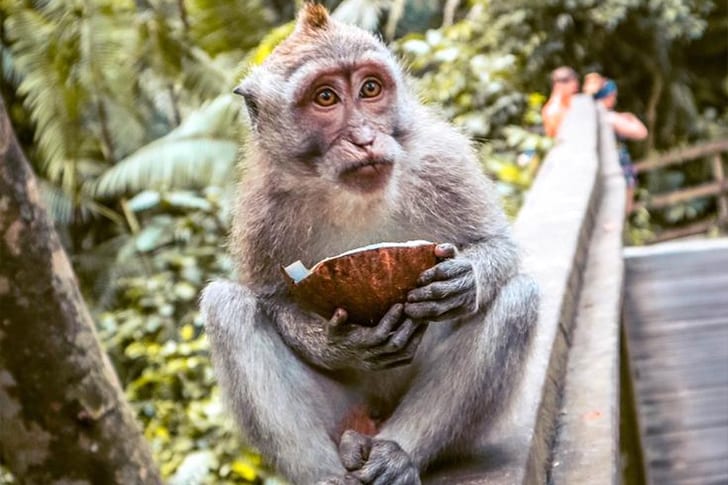
Crab-eating macaques are very resourceful. Just like humans, they are omnivorous, though in the Ubud Monkey Forest the meals that they are fed three times a day mostly consist of fruits and vegetables. A couple of their food staples are bananas and corn, for example.
To include some variety in their meals, the monkeys also receive papaya leaves, coconuts, cucumbers, and various local fruits. It is because these animals can eat everything we do – and have been seen using tools to do so – that they are sometimes considered to be pests.
One Of The Best Examples Of Communing With Nature
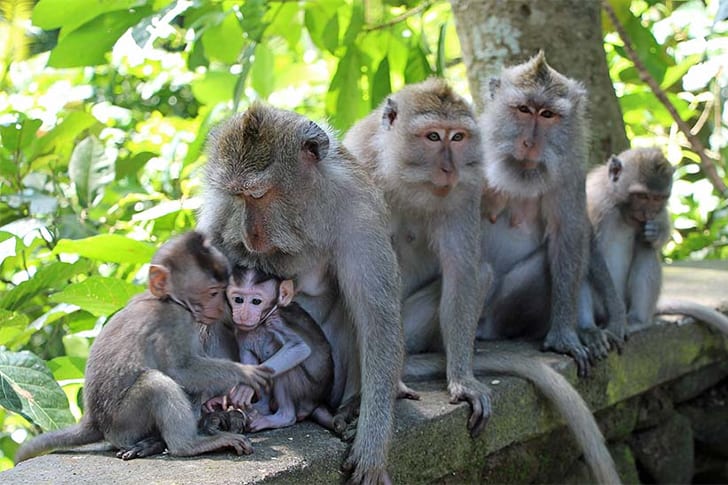
The relationship between the villagers and the crab-eating macaques shows that it is possible for humans to peacefully coexist with these animals. The search for harmony is a major theme in Balinese culture, so animal care is of the utmost importance in the Ubud Monkey Forest.
This peaceful environment is open to tourists with the goal of spreading the Balinese philosophy of unity with nature. The forest is also used for research purposes in order to help scientists understand the way these macaques interact with each other in their natural habitat.
We Have A Lot In Common With These Monkeys
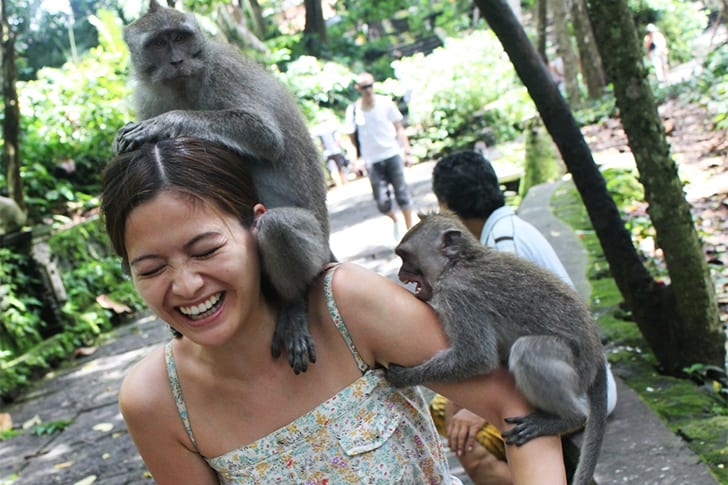
Like the majority of mammals, including humans, crab-eating macaques sleep at night and are active during the day. Visitors and monkeys thus come in close contact with each other in the Ubud Monkey Forest. These animals are used to tourists and love to approach them.
As a result, visitors get to watch these animals go about their day-to-day activities, though they have to respect the monkeys' personal space. Their social behaviors are very similar to ours: they groom, fight, and take care of their little ones. Mothers nurture their babies for about 10 months.
Never Take Back An Offered Gift To These Monkeys
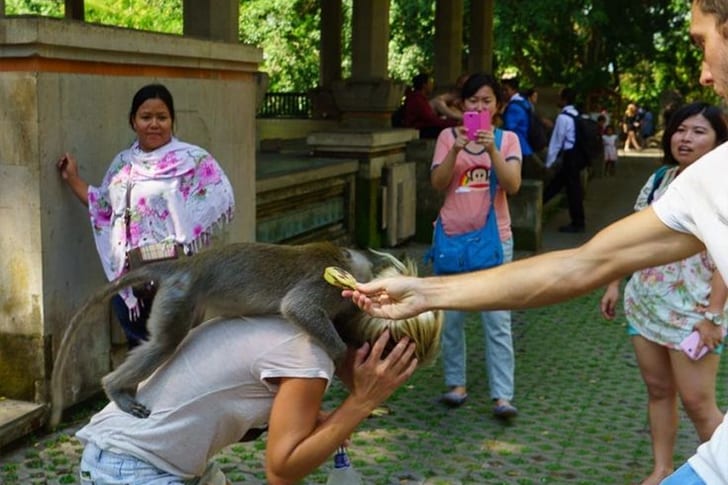
Just like other visitors, the Hickses probably received a warning when they came to the Ubud Monkey Forest. Once we offer food to the monkeys, it’s important to actually give it to them. Otherwise, they might get upset at not getting what had been offered.
The reason for the warning is that monkeys react aggressively when they’re upset, as any vet would confirm. Thus, a visitor making the wrong gesture could be injured in a monkey attack. But as long as people follow this rule, there should be no issues.
Trained Forest Workers Keep Tourists Safe From Violent Monkeys
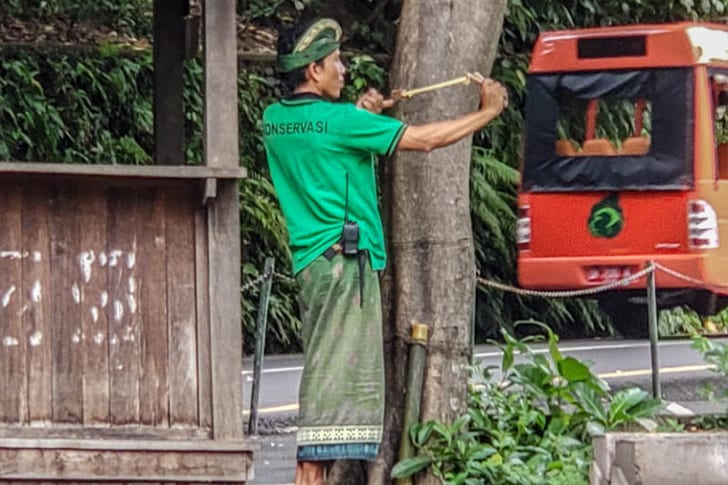
Monkeys at the Ubud Monkey Forest normally have no problem cohabiting with visitors. However, there are certain exceptions, with monkeys turning more aggressive than usual even without provocation. Therefore, workers in the forest are prepared to protect tourists in the event of a monkey attack.
Among the methods workers employ to prevent tourists from being harmed and thus ensure people will continue to visit is the use of slingshots to keep aggressive animals at bay. However, some people, such as animal rights activists, might consider this method to be cruel.
The Hickses Went Straight From Australia To Bali
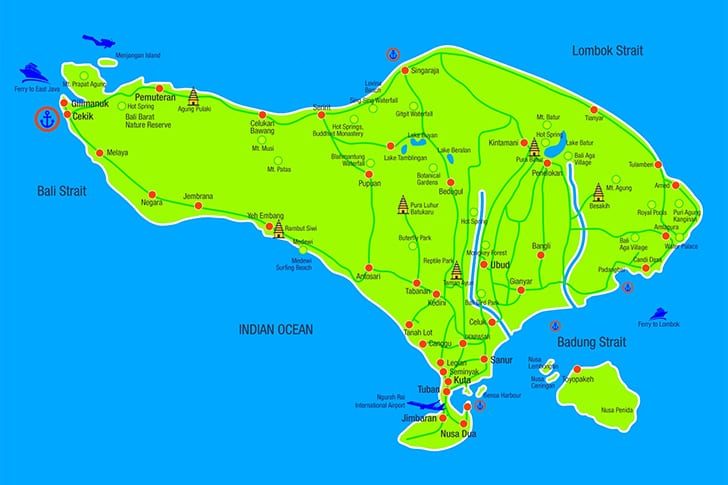
Australia is an enormous country with a wide variety of topography. The Hicks family's home in Queensland happens to be very close to the Great Barrier Reef, the largest coral reef in the world and one of the most beautiful coral reefs on the continent.
After the three-hour flight to Bali, the Hickses were now ready to safely trek through the jungle. With three children in tow, some of the most adventurous activities were off-limits, but they knew that the Ubud Monkey Forest was a must-see for the entire family.
The Hicks Kids Weren't Camera Shy
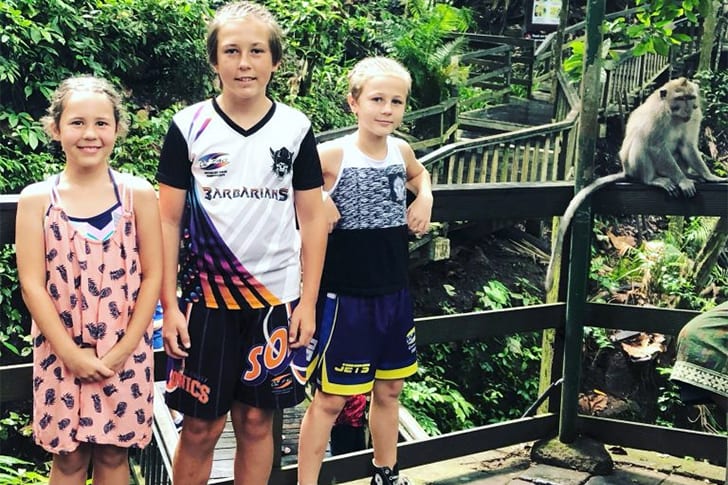
Immortalizing an awesome vacation with awesome photos is one of the best ways to make sure we'll remember the details for years to come. Elijah, Jimmy, and Kayleigh were happy to have a whole bunch of pictures taken of them throughout the Ubud Monkey Forest.
However, Judy and Simon eventually wanted a photo of the entire family in the forest, so they asked the tour guide to take it for them. But when a monkey appeared out of nowhere as they were posing, an ordinary picture was transformed into a hilarious mishap.
A Deceptively Friendly Monkey
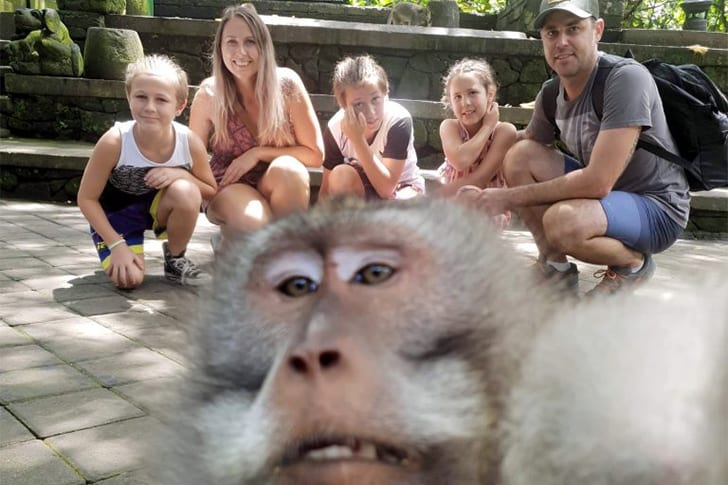
Like many other tourists, the Hickses wanted to document their visit, so they asked their tour guide to take pictures of them. They were getting ready to smile when suddenly one of the monkeys interrupted the photoshoot, getting right in front of the lens to be in the pictures as well.
Though the way this monkey went about it was unusual, it's not unheard of for the monkeys to directly interact with tourists. In this case, however, the monkey's intentions weren't exactly friendly. It wasn't until after the incident that the Hickses noticed something remarkable in one of the hijacked photos.
A Monkey Photobombed The Hicks Family Portrait
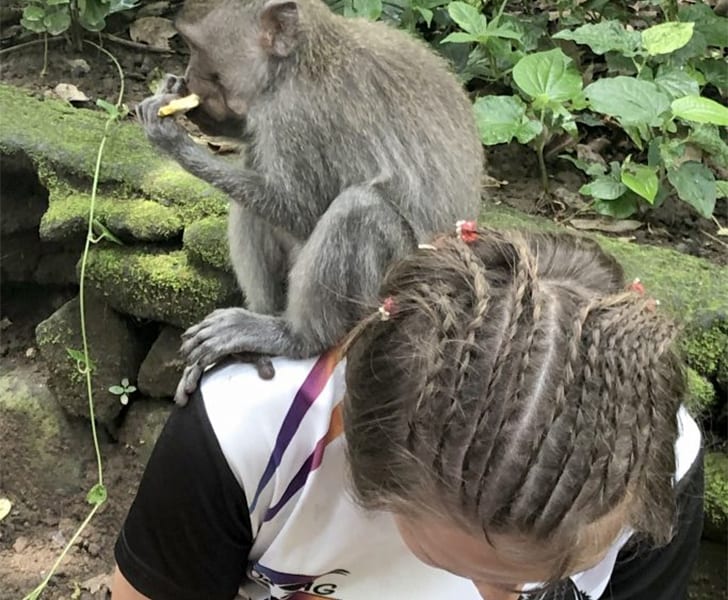
Just as the forest tour guide was taking the picture of the Hickses, one of the monkeys got in the middle of the lens and then held onto the device, almost as if it were taking a selfie. Did the monkey know what it was doing?
Considering how smart these animals are, we wouldn’t be terribly surprised if it did. The guide kept taking more pictures as he struggled with the monkey's grip. Eventually, he took advantage of the animal's diet to distract it long enough to get a photo of just the Hicks family.
The Monkey Accepted Treats To Get Out Of The Picture
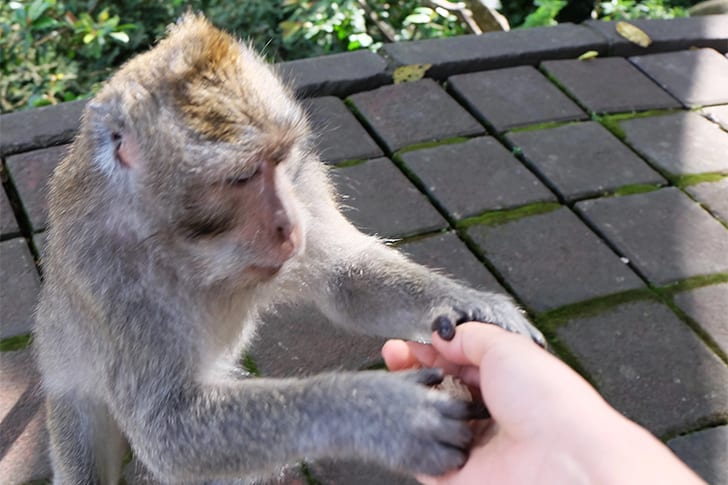
Although the Hicks children were very amused to see a monkey posing for a picture, the forest guide managed to get the monkey’s attention by offering it peanuts. Because this food is a special treat not found in the animals' everyday diet plan, the strategy worked fast.
The Hickses were ready to carry on with their tour when Judy started going through the pictures and found something she could never have anticipated. That monkey turned out to be more devious than she had thought. What had it done that surprised her so much?
A Rude Picture Made The Hicks Family Famous
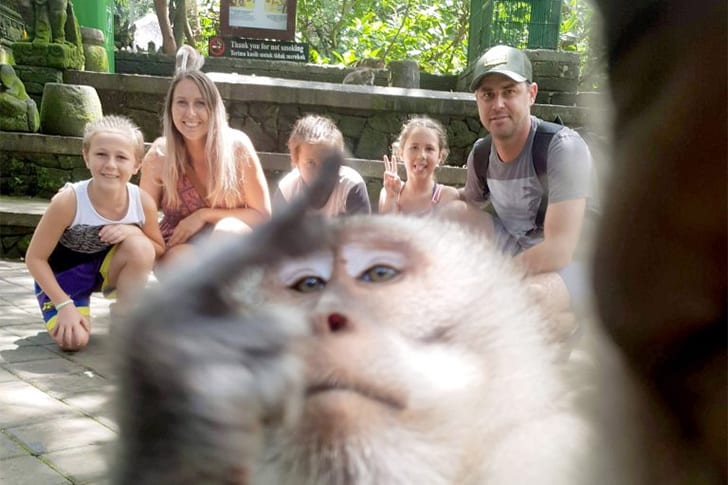
In one of the pictures, Judy saw something that she couldn’t believe. Either the sassy monkey had figured out a human insult, or it wasn’t as happy with the presence of humans in its territory as everyone had thought. When she realized it, Judy couldn’t help but laugh.
The monkey had actually flipped the Hickses off in one of the snaps, which was especially rude considering the animal is fed by humans. Fortunately, the nice family found it hysterical rather than offensive. Judy decided to share the incident with her friends, and the story spread like wildfire.
Are Animals Eligible For Copyrights?
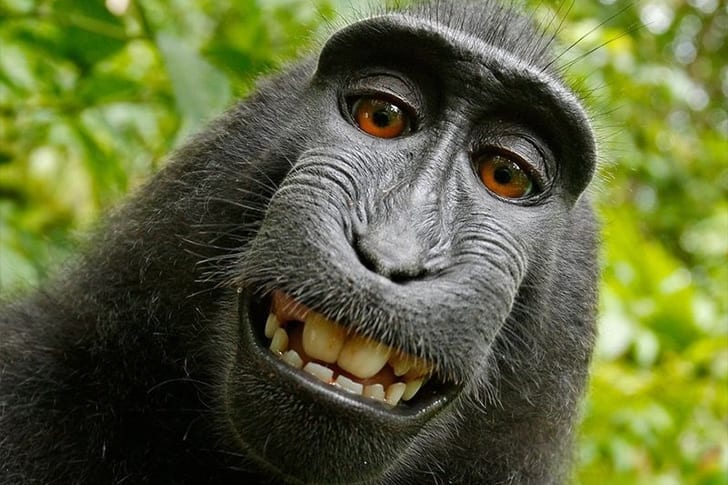
The Hicks family photobombs looked as if the monkey had taken them. Does this mean that it can claim copyrights to the pictures? A similar case was almost brought to court in which a selfie taken by another primate was placed under consideration for copyright protection.
This was a subject of debate for quite some time, but the conclusion was clear: only pictures taken by people are subject to copyright protection. Therefore, although the monkey itself caused the Hicks photos to be taken, it doesn't own them, which means all the pictures – including the rude gesture – are in the public domain.
PETA Was Involved In The Copyright Case
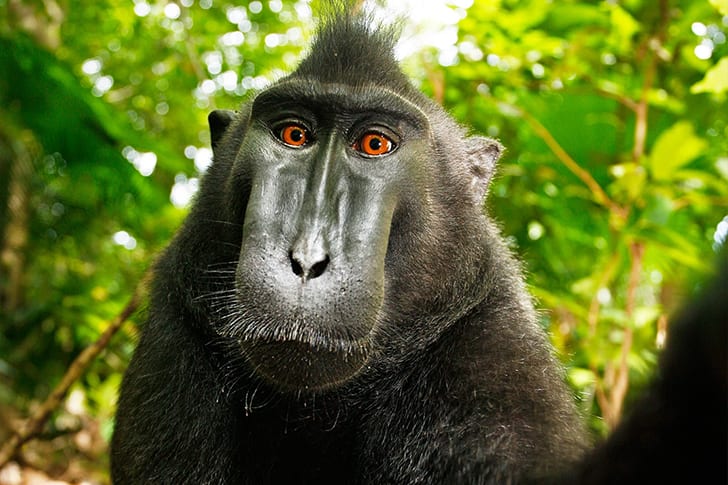
People for the Ethical Treatment of Animals (PETA) has been advocating for animal rights since its foundation in the '80s, campaigning in industries from clothing to food. The organization also got involved in the aforementioned copyright case, maintaining that animals should be eligible for copyrights.
PETA even filed a lawsuit in the monkey's name, proposing to administer any proceeds from the use of these pictures on behalf of the animal. The lawsuit was dismissed, and the organization's attempt to appeal the verdict failed as well, thus setting a precedent for cases like that of the Hicks family photos.
